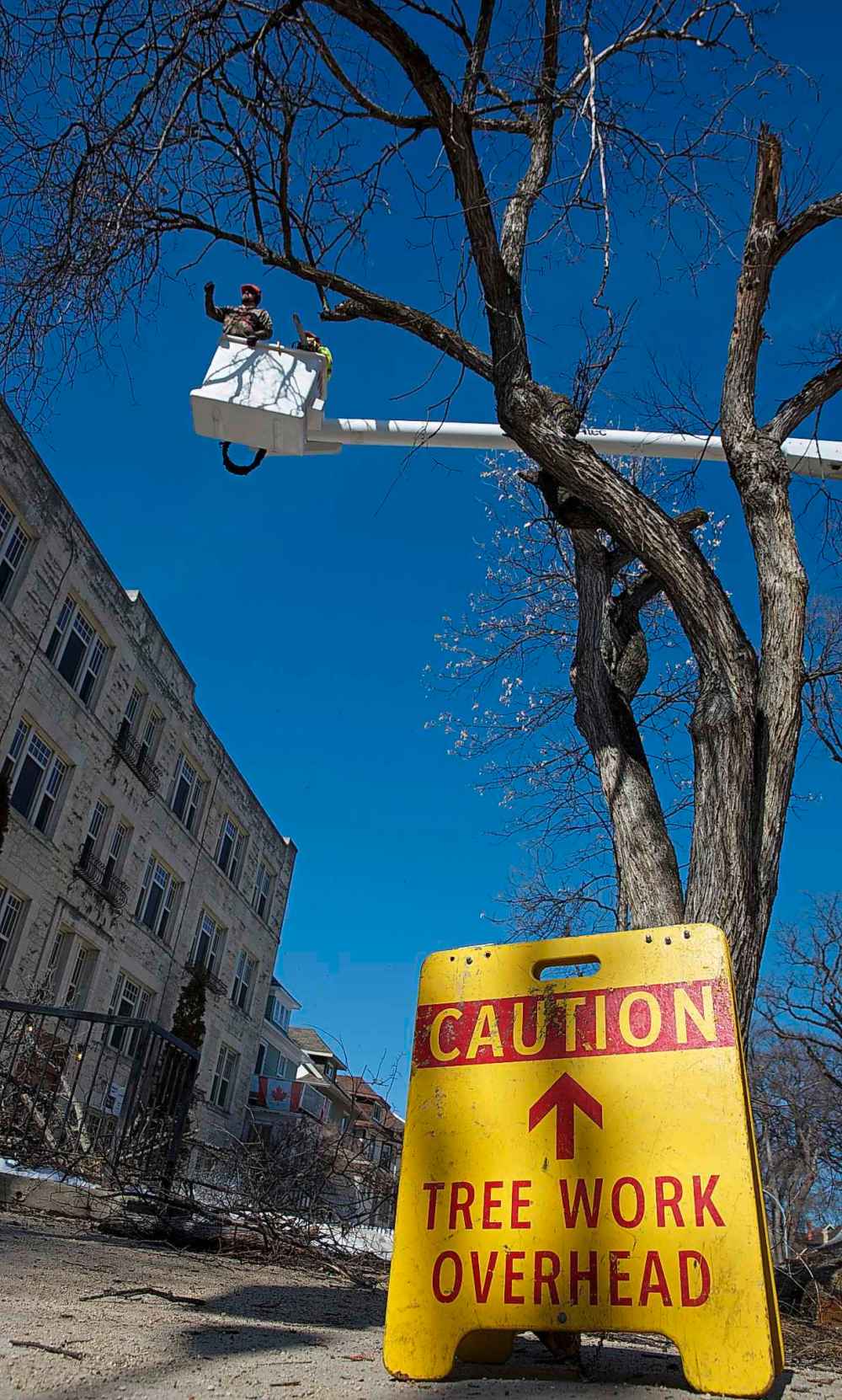City planting hardier tree types to replace dying elm, ash
Read this article for free:
or
Already have an account? Log in here »
To continue reading, please subscribe:
Monthly Digital Subscription
$0 for the first 4 weeks*
- Enjoy unlimited reading on winnipegfreepress.com
- Read the E-Edition, our digital replica newspaper
- Access News Break, our award-winning app
- Play interactive puzzles
*No charge for 4 weeks then price increases to the regular rate of $19.00 plus GST every four weeks. Offer available to new and qualified returning subscribers only. Cancel any time.
Monthly Digital Subscription
$4.75/week*
- Enjoy unlimited reading on winnipegfreepress.com
- Read the E-Edition, our digital replica newspaper
- Access News Break, our award-winning app
- Play interactive puzzles
*Billed as $19 plus GST every four weeks. Cancel any time.
To continue reading, please subscribe:
Add Free Press access to your Brandon Sun subscription for only an additional
$1 for the first 4 weeks*
*Your next subscription payment will increase by $1.00 and you will be charged $16.99 plus GST for four weeks. After four weeks, your payment will increase to $23.99 plus GST every four weeks.
Read unlimited articles for free today:
or
Already have an account? Log in here »
Hey there, time traveller!
This article was published 26/03/2019 (2447 days ago), so information in it may no longer be current.
Although the city appears to be fighting a losing battle to save its ailing urban forest, it’s replacing dead and dying elm and ash trees with what it believes are less-vulnerable types.
“We’re planting a wide variety of species (now),” city forester Martha Barwinsky said Tuesday, listing oak, maple, hackberry and crab apple. The city is also planting disease-tolerant American and Japanese elms.
The city is, however, losing trees at more than four times the rate they’re being replaced. And 3,200 more were removed last year than in 2017.

Last summer’s appearance of the cottony ash psyllid — also known as jumping tree lice — is targeting ash trees, along with the ruinous emerald ash borer beetle.
City council allocated $1.3 million in 2018 to fight the emerald ash borer beetle, first detected in November 2017 in the Archwood neighbourhood in St. Boniface. A city-wide monitoring program led to last year’s discovery of a borer beetle in Windsor Park, five kilometres from Archwood.
The destructive insect, believed to have arrived aboard wooden shipping containers from China, has laid waste to ash forests across North America.
Part of the city’s plan included removing and disposing of 800 ash trees. But the arrival of the new pest necessitated the removal of several hundred more, Barwinsky said.
1.gif)
“We had an outbreak (of the cottony ash psyllid) last year in Riverview and River Heights,” she said.
In addition to approximately 1,400 ash, Barwinsky said the city removed more than 9,000 elms in 2018 because of Dutch elm disease, which has ravaged the city’s American elm forest, which provides the thick, green canopy over many older residential streets.
It appears the city was slow to adapt its tree-planting strategy: before Dutch elm disease established itself in Winnipeg in the 1970s, the city planted American elms on boulevards and in parks exclusively. After its arrival, the city planted exclusively ash trees. Together, the elm and ash trees account for 60 per cent of the city’s urban forest in parks, on boulevards and natural areas.
Just 2,500 replacements were planted last year, Barwinsky said. And even though it was an increase of 100 from 2017, the city is falling behind; the five-year replacement ratio ranged from 50 to 60 per cent, but slipped to 44 per cent last year.
About the cottony ash psyllid
Eggs are laid in the trees, hatch in spring and the nymphs (immature insects) feed on the growing leaves.
At this stage, when feeding on new leaves, the nymphs suck out the sap, causing the leaves to curl, producing a white, cottony substance.
In July, the nymphs become adults and lay eggs which hatch in August.
Eggs are laid in the trees, hatch in spring and the nymphs (immature insects) feed on the growing leaves.
At this stage, when feeding on new leaves, the nymphs suck out the sap, causing the leaves to curl, producing a white, cottony substance.
In July, the nymphs become adults and lay eggs which hatch in August.
The second-generation nymphs feed in the curled leaves that were created by the first generation. The white substance provides them with protection from pesticide spray.
The insect is tiny, about three millimetres in length (only slightly larger than an aphid), has yellow and black markings, clear wings and is able to jump.
How to tell if your tree is infected
• Thinning in the upper portion of the tree.
• Browning, yellowing and curling along the edge of leaves, indicating a first-generation psyllid population.
• Cottony substance found within the curled leaves, indicating a second-generation psyllid population.
• Heavily damaged leaves can have a cauliflower appearance.
• Leaves may drop prematurely.
How to protect your tree
• Keep trees healthy by watering.
• Insecticide treatments may be available. It is best to consult a licensed arborist for treatment options.
Source: Province of Manitoba
“We’re falling behind with the reforestation. In my time (10 years as city forester) we haven’t ever replaced one for one,” she said. “We typically have a two-year turnaround time for replacement planting.”
During the recent 2019 budget public review process, individuals and groups urged councillors to spend more.
“The parks and urban forestry budget has been underfunded for years and status quo is not good enough for the long-term health of the urban forest,” Pam Lucenkiw, a member of the community advocacy group OURS-Winnipeg, told the parks committee.
Lucenkiw cited a drastic 36 per cent cut in funding to protect the urban forest, from $7.1 million to $4.6 million.
Gerry Engel, president of TREES Winnipeg (formerly known as the Coalition to Save The Elms) told members of the executive policy committee that the experience in other cities across North America shows that the city’s ash forest is doomed and urged councillors to divert scarce dollars away from fighting the emerald ash borer and concentrate efforts to preserve elm trees, which he said can be saved with proper methods.
“Our American elm population is the most spectacular population of elms of any other city in North America, quite possibly the world,” Engel said. “The prompt sanitation of diseased trees is critical if we’re to slow down the spread of Dutch elm disease and maintain a healthy population of elms in the future.”
The city normally surveys the tree population during the spring, summer and early fall and removes diseased and dead trees during the winter, but Barwinsky said her department is adopting an urgent removal strategy in which diseased trees will be removed shortly after they are identified.
Barwinsky said the city will continue to combat the Emerald ash borer beetle, concentrating efforts this year in the Windsor Park area.
aldo.santin@freepress.mb.ca










